The contract provides for the design, development, fabrication, test, delivery, and support of four MQ-25A unmanned air vehicles, including integration into the carrier air wing for an initial operational capability by 2024.
“MQ-25A is a hallmark acquisition program,” said Assistant Secretary of the Navy for Research, Development, and Acquisition James F. Geurts in the announcement.
“This program is a great example of how the acquisition and requirements communities work hand in hand to rapidly deliver capabilities to our Sailors and Marines in the fleet.”
When operational, MQ-25 will improve the performance, efficiency, and safety of the carrier air wing and provide longer range and greater persistence tanking capability to execute missions that otherwise could not be performed.
“This is an historic day,” said Chief of Naval Operations Adm. John Richardson.
“We will look back on this day and recognise that this event represents a dramatic shift in the way we define warfighting requirements, work with industry, integrate unmanned and manned aircraft, and improve the lethality of the airwing — all at relevant speed. Everyone who helped achieve this milestone should be proud we’re here. But we have a lot more to do. It’s not the time to take our foot off the gas. Let’s keep charging.”
In 2016, after many delays over whether the ( Unmanned Carrier-Launched Airborne Surveillance and Strike) UCLASS aircraft would specialise in strike or intelligence, surveillance and reconnaissance (ISR) roles, it was reported that a significant portion of the UCLASS effort would be directed to produce a Super Hornet sized carrier-based aerial refuelling tanker as the Carrier-Based Aerial-Refuelling System, with “a little ISR” and some capabilities for communications relay, and strike capabilities put off to a future version of the aircraft.
In July thay year, the programme was officially named “MQ-25A Stingray”.
The Pentagon apparently made this change in order to address the US Navy’s expected fighter shortfall by directing funds to buy additional F/A-18E/F Super Hornets and accelerate purchases and development of the F-35C.
The introduction of this platform also addresses the carriers’ need for an organic refuelling aircraft, proposed as a mission for the UCLASS since 2014, freeing up the 20–30 percent of Super Hornets performing the mission in a more capable and cost effective manner than modifying the F-35, V-22 Osprey, and E-2D Hawkeye.


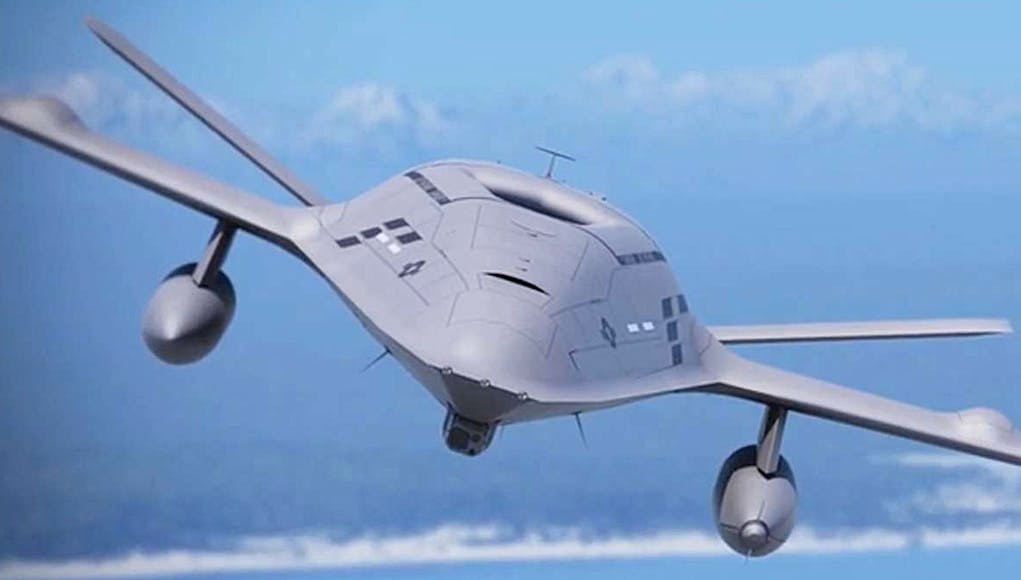

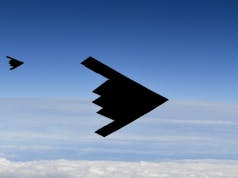
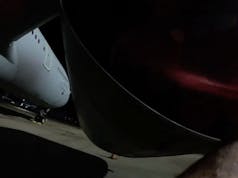

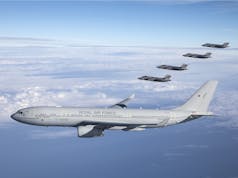

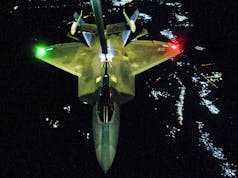


According to some here this is of no import whatsoever………..
They are investing in getting UAV technology working from a carrier not just a “tanker”.
Good grief.
Lol. Aye it will be interesting to see what the cost would be if it went into pull production. Could it be produced for $50mm or less for 50 of them. There is a risk of specialising to much with uav’s of the airframe could be adapted to carry either fuel, pave-way or some sort of surface/airborne radar with high endurance it would be pretty invaluable
That’s $50mm each not all 50 just in case.
What is this dollar-millimeter measure you speak of? Very amusing.
It’s a massive amount of money 4 times the Chinese yearly defence spend our defence spend 2017 18 is the 3rd largest defence spend in the world at 54 billion dollars ..
Yes a gloriously expensive idea @ $200 Mn a throw for the US Navy to refuel its F-35Cs and F-18s.
Only in MURICAAA….
If you actually understood the program and this article, you would know that the USN is buying these UAV’s in order to preserve the remaining airframe hours on the F-18’s currently being used for tanking. And in so doing, delays the need to replace said F-18’s with new aircraft, which saves a shed load of money.
IOW, the program pays for itself through savings.
If you understood the program you would realize that this is a learning exercise, and at $800m its very good value.
He already had a go at me on an other thread about Stingray.
He doesn’t quite grasp that is part of a greater whole.
(Chris H) Ron5 – I fully understand what this programme is about and it is an unmanned tanker programme. Just as I said. And are you really telling me that the F-18s being brought out of storage from the Boneyard are more expensive to converta s tankers than a $200 Mn drone? Care to give us a Benefit / cost ratio business case please?
David Taylor – If you have something to chal;lenge in what I have written maybe address it to me not make snide personal remarks ‘to others’ like I am not here. Bloody pathetic. Especially as it was YOUR link that gave the game away when YOU said it was all about launching missiles at distance and didn’t mention tankers but here is YOUR link. Its why I challenged your comment (which you don’t like do you David?) Try reading it:
” The MQ-25 Stingray will be a tanker with some ability to conduct intelligence-gathering missions that will extend the range of the rest of the carrier’s aircraft, allowing them to fly and fight at greater distances than before”
https://www.popularmechanics.com/military/a22985234/boeing-will-build-the-navys-mq-25-stingray-carrier-based-tanker-drone/
So where was the missile launch aspect mentioned?
(Chris H) Andy G – how have I not understood the programme. Its bening bought as a tanker. The US Navy says as much. whats to not understand? And $800 Mn is a shed load of cash for tankers. IMHO
(Chris H) OK for those who say I don’t understand this programme This is a clip from the respected Vago Muradian ‘Defense & Aerospace Report’ discussing the recent MQ-25A Stringray contract award to Boeing with Col. James “Hondo” Geurts, USAF Ret., Assistant Secretary of the US Navy for research, development and acquisition.
Listen @ 02:17 to the question:
“What were those two key parameters of this ..?”
Answer:
“Carrier integration and the ability to deliver Gas”
https://www.youtube.com/watch?v=UunmdNfvP1s
And some need to lighten up it was a flippant remark of mine in the first place !
Wait for it …..
#FacePalm
Rolls supply the Engine and Cobham the refuelling tech. I know both US based divisions but never the less UK run companies involve in a cutting edge project.
Doesn’t Cobham do the refueling kit in the UK?
Thanks. Welcome detail in contrast to speculation.
Who is speculating Barry? According to their website Cobham’s autonomous air-to-air refueling is produced out of Davenport USA.
I don’t understand the last sentence that talks about modifying F-35, V-22 & E-2D.
Why would they need modifying?
It means they nolonger need to modify F35b, V22 or E-2D to perform air to air refueling.
There were zero plans to convert either the E-2D or F-35 to become tanker aircraft. Both aircraft are ridiculous candidates for that role. The V-22 is already qualified to perform air to air refueling for the Marines.
The current UN fleet of combat aircraft (all F-18 now) are all short on range, compared to previous generation of aircraft. The F35 is/will be similar to the F18. The old Tomcats and A6 intruder had much longer legs. The Navy boys need small, carrier borne refueling aircraft, to top them up after take off.
Also the CHinese now have a fleet of very long range surface to surface anti ship missiles, so the big carriers have to stay further out. They make a big target!
The F-35C has a much great range than the F-18.
Both the USMC and Royal Navy could do with something similar to extend the range of their F35B’s – they have a shorter range to accomdate the lift-fan. However they’d most probably need a VSTOL or rotor-based UAV for the purpose. If a general purpose rotar-based UAV then it could mean a Crowsnest module airborne 24×7 over the carrier.
Maybe the Airlander idea could meet this need in future. Giant airship with multi day endurance and the ability to land on water. Perhaps you wouldn’t use it as a tanker but as a crowsnest station etc it could work really well.
All they need to do is work out how to fly the thing when it’s windy…
I’ve had the same thought; give it the ability to be remotely controlled and refueled by helicopter and you’d have a 24/7 365 crowsnest with better ability for less cost.
As for windy conditions, think it needs wind data or a system to measure the wind loading to then feed into a fly by wire system. Also there should be less to crash into up there …
Airlander is great concept for long range logistics and with current ’50’ builds designed for up to 60tonne payload it has potential to fly 1000km from somewhere.. .loiter for a day and fly back.
Not very discreet and no ability to get out of Dodge quickly if rumbled with cruise speed of only 105 knots however.
Was thinking it could be a fantastic replenishment tool for containerised packages… CAMM? Or specialist mission modules for larger vessels that could accept an air drop… Hoist out old containers… Drop back in fresh containers…. Use self compensating lift technology utilised in offshore oil and gas industry to offset swell etc.
Pretty sure Airlander wouldn’t fit on an aircraft carrier.
it can land on water
In what sea state?
The US marines have said they will use their V-22 air tanking capability to extend the range of their F-35Bs.
Can you imagine if they had opened up with this as the soundtrack:
https://www.youtube.com/watch?reload=9&v=E06cNv55jTs
or this:
https://www.youtube.com/watch?v=mpMg1upld0w
Did I see two Typhoons fly past in the video!
The only available option the RN have for aerial refuelling the F35Bs is via a buddy-buddy method. By using a F35 you take it away from its primary purpose as well as burning through airframe hours. The Merlin could possible be fitted out as a tanker, however it flies too slowly for the F35 to make it viable. The only proven method of aerial refuelling would be the V22 Osprey. The Chinook whilst being able to carry the fuel (7200Kg via ferry tanks) probably wouldn’t be suitable as it also couldn’t fly fast enough and the down-wash it generates may cause buffeting issues for the trailing drogue. I’m pretty certain the Chinook has never been trialled for aerial tanking!
Bell do have two other tilt-rotor aircraft in development. These are the V280 Valor and the V247 Vigilant. The V280 is a manned prototype of the the Blackhawk replacement Future Vertical Lift (Medium). Whilst the V247 is an unmanned drone designed for the USMC to carry out close air support and reconnaissance tasks. It is about the size of a Reaper, so would be out as a tanker aircraft as it wouldn’t be able to carry enough fuel. The Leonardo AW609 cannot be used, as there is a joint Bell/Leonardo contract stating Bell do all the military tilt-rotors whilst Leonardo do the civilian.
So that leaves us with either the V22 or V280. As I’ve said before the V280 although a more modern design is a direct replacement for the Blackhawk, so would probably be too small to carry the required amount of fuel. This leaves the V22 as the most viable option. The V22 was designed as a replacement for the CH46 Sea Knight (baby Chinook). and the fuselage size is roughly comparable. The USMC trial has proven that the aircraft is suitable for single point tanking on F18, Harrier and CH53 Sea Stallion. However, they did have issues with the system and they only used a single tank fit. The cabin size is comparable to a Merlin and that can use a 1500Kg ferry tank, therefor if it carried 3 tanks that would total 4500Kg. I’m not privy to the real amount of fuel the F35 carries internally (possibly 6000Kg) or its fuel burn. So although not ideal, should be enough for topping up. The major problem with the V22 though is its purchase and operating costs, which compared to a RAF Mk6 Chinook $60 million and $4600 per hour vs $70million and $11000 per hour.
The US Navy’s requirement for the MQ-25 Stingray is for the aircraft is to be able to deliver 6,800 kg of fuel total to 4 to 6 aircraft at a range of 930 km from the carrier. This is significantly more than the V22 could theorectically carry without using its own internal fuel load as well. So what’s the answer for the RN for a suitable aircraft that can fuel the F35s and operate from our carriers?
Technically yes all options. But because of the AirtTanker contract it is a non-starter.
Well done MoD, again, not.
Urban myth.
(Chris H) The air tanker contract has nothing to do with maritime refuelling although it does act as the main tanker resource for operations where required. As in F-35s off a QE attacking a ground position just as the UK A330s support US Navy F-18s off carriers in the Med attacking ISIS. If the Navy needed to sort Buddy up refuelling it could.
More false information David or ignorance? You are better than this and I am disappointed
Few points:
F-35 fuel capacity is well documented and can easily be found on the internet
The only existing tanking capability that could be operated off the QE is the V-22 tanker. That program is more advanced than you think, the Marines are already planning on how to use it to extend their F-35Bs.
None of your other suggestions are more than ideas. AFAIK none are funded for development. F-35B buddy tanking was for a while on the Marine’s wish list but was an early program cut.
One option to extend F-35B range that I don’t think you mentioned, would be good old fashioned drop tanks. Once again, as far as I know, are not under development anywhere although the Israeli’s at one point hinted they would like some for their F-35As.
Drop tanks would seem like a really good option to have available. Surely someone is going to develop them? Nice for a supplier from a business perspective too since they are, by their very nature, single use only (assuming a mission doesn’t get aborted). Are any of the F-35 external hardpoints designed to be wet?
I think the Israelis were even talking about conformal tanks at one point although, given the differing forward fuselage shape of an F-35B vs F-35A due to the lift fan, I’m not sure how much transferability to the F-35B there would be of any Israeli conformal tank work even if it were to happen.
Some useful information in relation to drop tanks.
“In laymans terms, the F-35 has the piping in its wings, the pump systems, the connections, etc, but nobody has physically built tanks optimised for its aerodynamic qualities (external fuel tanks create a lot of drag; often quite a bit of the fuel they provide is cancelled out by the extra thrust required to fly with them), and nobody has run testing to make sure that such a fuel tank will jettison safely without impacting the wing or tail (this isn’t a major challenge, but it takes time to tune how the tank is ejected).”
https://www.quora.com/How-can-the-F35-be-useful-if-it-cannot-make-use-of-additional-fuel-tanks-and-aerial-tankers-to-increase-its-range
Thanks Nigel.
I suspect that due to the much more accurate computer simulations of aerodynamic properties developed in the last 20 years it is a lot cheaper to develop drop tanks (relatively speaking) and easier to maximise efficiency than it would have been for things like F-18. On the negative side though, any F-35 developments would presumably want to spend time and money to model and then measure the effect on RCS and reduce that as far as is practical.
(Chris H) Nigel – And of course while you can drop the tank you cannot drop the pylon on which it was mounted after tank drop. This will still add (as you say) drag and reduce fuel efficiency and more crucially reduce the ‘Stealth’ factor of the aircraft. One of my criticisms of the F-35 concept is that if ‘Stealth’ is its only saving grace then it can never carry wing pylons as Stealth’ goes right out the window. Or venturi. Or wherever…
The Israeli Air Force needs long-range aircraft that can carry a lot of fuel and weapons, because of Iran.
https://www.popularmechanics.com/military/aviation/a22605757/israel-f-15s-f-35s/
Cheers guys on a sensible debate. I never looked at the drop tank solution purely on trying to keep the aircraft with its standard RCS signature rather than loading up the wings. I would have thought that if the F35 was operating in the tanker role it would require drop tanks to augment the fuel required to be useful, so the capability would have been designed in. Didn’t know the USMC had dropped this requirement in favour of the V22, as I was led to believe this was an ongoing trial and therefor not a future plan.
My repeating thought is that the V22 is the only viable solution for us. It would require Bell/Boeing to drop the price or have AW part build in Yeovil. It would also require the Mod/Treasury to put its hands in its pockets to pay for the maintenance, aircrew, groundcrew, training and logistics to support this demanding aircraft i.e an increase in the defence budget.
It would be very interesting to see (but unlikely to ever be seen because it’s probably classified) some fuel usage graphs for F-35B taking off from a QEC & entering level flight towards a target with various payloads. I’m thinking that the amount of work the lift fan is having to do to provide the lift augmentation on takeoff that a cat would otherwise provide (by the cat imparting extra airspeed over the wings) plus the aerodynamic drag from the lift fan flap being up during takeoff that presumably requires the main engine to be at full thrust for longer to get the required forward cruising speed probably means that the amount of fuel an F-35B uses to get to the speed and altitude that it requires to start its flight towards the target is disproportionately high vs something like an F-18. The good news from an AAR refueling perspective is that if that is the case then a top up relatively close to the carrier to make up the disproportionately high amount of fuel burned during takeoff might have a bigger effect on combat radius than might otherwise be thought.
From an energy perspective similar but I suspect lesser effects are probably in play regarding higher fuel burn on landing vs a trapped landing since no arrestor gear is there to drain energy from the aircraft so it all has to be done using fuel burn to compensate for a natural reduction in speed causing the F-35B to stall and fall out of the sky. I suspect that high-fuel-burn-on-landing doesn’t help much with AAR though since I assume it would be considered too risky a standard operating procedure for an additional AAR prior to landing to be actively required in order to have enough fuel for a returning F-35B to land.
As it happens, I bet that part of the testing happening over the next 2 or 3 months will be exactly this – looking at the real life as opposed to simulated fuel burn characteristics for takeoff and landing under various load and wind speed conditions.
(Chris H) Julian – You make some interesting observations and I am sure you are right about the extra on-board energy needed for F-35B take off (even with a ramp). CATs will impart that energy but I think you will find an F-18 launched from a CAT isn’t fully fuelled if it has a full weapon load as there are limitations and why Buddy Up is so crucial. When the RN was the first to develop this for carrier use it was to support Supermarine Scimitar and de Havilland Sea Vixen and more crucially because the S1 Buccaneer was so under powered it basically went up with full weapon load and on fumes! Of course technically all air refuelling is ‘Buddy Up’ ….
You are again correct about needing extra energy on the aircraft for landing even with SRVL but which does allow full retention of fuel and weapons rather than dumping for Vertical Landings. Again even CATOBAR landings have weight limits and aircraft returning to a CATOBAR carrier will offload unused weapons.
The Laws of Thermodynamics state that ‘Energy can neither be created nor destroyed’ so therefore nothing is for nothing as regards energy as you say. Its all about how you use it and where you place that energy source.
The F-35B’s will use far less fuel when landing & taking off from the carriers than the F-35C mainly due to them not using afterburners for those evolutions. Afterburners use up a lot of gas as I am sure you know.
And in addition, the F-35B needs to retain far less fuel in reserve when landing. Arrested landing types need to retain enough fuel to enable bolters. The F-35B does not.
(Chris H) DaveyB – While it isn’t a current policy I have always thought that given the 3 Test & Evaluation aircraft at Edwards at some point will cease to be of value in that role, with advanced simulators now available making ‘trainer’ F-35s a waste of money and they will never be fitted out for combat use this leaves two options – Break up for parts or (as I believe) convert to tankers.
The attraction of this is a) it makes further use of the large investment in these most expensive early aircraft and b) it is fundamentally simple. They could be stripped of all ‘Orange’ test wiring, other sensors and kit to leave a basic airframe. The weapon bay doors could be removed and a pair of sculpted fuel tanks fitted in that space utilising weapon mountings already there which alos allows the dropping of tanks for maintenance and repair. They could be lower than the under belly to give more volume and shaped to reduce drag. The drogue pods will need to be outboard of the fuselage to clear the large exhaust jetwash and dynamic turbulence but there are (as I understand) fuel tank pylon mountings already in the wing with control wiring and pipes fitted.
Whatever these would cost to convert (and we need 3 on a ‘2 in service 1 in maintenance’ rotation) it must be far cheaper than buying 3 x V-22 Ospreys although I do appreciate these could be used for other duties. But they will still need the up front capital funding, maintenance, air costs, spare parts, training and loss of hangar storage space justified. Whereas F-35s are already paid for, have a depreciated book value, conversions would be funded over a period of time and could be done by RN / RAF crews at Marham. Many RAF ground crews will have experience of fitting and maintaining donor refuelling systems and I am sure Marshalls at Cambridge and Cobham could add solutions. Or just give them the contract to do it.
Sadly I suspect this idea is far too simple for the folks wearing Scrambled Egg peaked caps in Whitehall who are only interested in big headlines. And of course Norfolk is a far less attractive option than all expenses paid trips to the USA.
@DaveB
It’s no secret that the Royal Navy would very much like to acquire some V-22 and that desire will only increase when the US marines bring theirs onboard.
I would imagine that the new USN version (CMV-22B) would be the variant of choice given its extra long range.
The RN could use it for long range night/day COD, search & rescue, SF insertion and, of course, tanking.
The Marine’s V-22’s are qualified to tank but I don’t know that the CMV-22B will be qualified. Probably not. So adding that capability would cost some more testing.
As you point out, the V-22 ain’t cheap. The only way it could work financially is if the RN can tag its order of half a dozen or so onto the end of the USN contract. Even then, I would guess we are talking around $100m per. So a long shot.
By the way, the original idea for the Marines F-35B tanker was a reel and hose in one weapons bay. No extra fuel. I saw a drawing of it many moons ago. It might still be on the web somewhere.
I don’t remember any discussion about the proximity of the hose to the aircraft’s engine jet stream. I agree it would look to be awfully close and vulnerable. Maybe that was a factor in it being discarded. Long time ago now.
(Chris H) Ron5 – I haven’t seen that concept but you have triggered a Google search ..
The other factor I was more concerned about was the ‘what if’ scenario where a central drogue could get stuck and was unable to be retrieved and then what happens when the ‘B’ comes in to land with its jet exhaust angled down right over that fuel pipe? I just think the idea is so very deliverable given what is already built into the airframe itself.
The other thing that has intrigued me and maybe you know the answer is whether the larger wing and folding ends on the ‘C’ could be fitted to the ‘B’ fuselage. I know the differences are further out in the wing itself and the wing air pipes that balance the ‘B’ in hover would need to be fitted but that extra lift and reduced footprint would be mighty handy on a carrier. Given those folding wing tips were designed here and are built by BAE I bet a pair have been ‘borrowed’ … Just throwing ideas around here for discussion
The air intake on top is actually quite brilliant when you think about it. One of the most dangerous things on a crowded flight deck are the engine air intakes, and crew getting pulled into one. This is obviously even a bigger issue with unmanned platforms. The air intake on top makes that a non-issue i imagine.